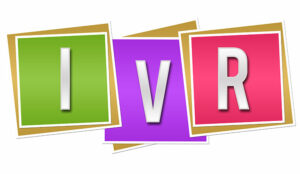Chris Caile of Nuance talks us through the similarities between the different methods of voice communication.
Voice is everywhere now thanks to its increased usage in our homes, cars, and TVs. This renewed interest is leading many people to come up with new words or phrases to describe similar technologies.
From IVR to voice channel to voice bots or even voice assistants, no matter what you call it, voice-enabled customer service solutions are really very similar. Each requires strong speech recognition technology, good natural language understanding, and, finally, amazing designers to help bring the experience to life.
IVR, voice channel, voice bots and voice assistants, these terms also have a lot in common. They are all variations for customer service solutions that feature speech. And, just like in diets, trends come and go in technology.
The traditional “IVR” (Interactive Voice Response) channel seems outdated and stodgy to some folk. They prefer to call it a “voice assistant” or even a “voice virtual assistant”. And if you interact via speech on the web or mobile device, you may talk to a “voice bot”. They prefer the term voice bot instead of IVR because it conveys a more modern approach. It is after all an automated speech recognition engine.
We don’t know what the next hot term will be for these types of solutions, and it doesn’t matter. One thing will remain constant: no matter what you call it, all speech-enabled solutions have similar characteristics:
- Strong automatic speech recognition (ASR) technology – You can’t have a functioning speech-enabled TV if it can’t understand what you are requesting. Same with the IVR. Callers get frustrated when the technology doesn’t accurately pick up what they are saying.
- Strong natural language skills – Delivering great customer service through a voice bot, IVR, or voice assistant means being able to not just recognise what is said, but to interpret the customer’s intent and have a two-way dialogue to help resolve the issue.
- Strong conversational design – It’s professional designers with experience in customer service solutions that make a great customer experience. The best and most natural voice experiences in the IVR or through the car or TV are created by people who know the power of good voice design.
Author: Guest Author
Published On: 28th Mar 2019 - Last modified: 2nd Apr 2019
Read more about - Guest Blogs, Nuance




































